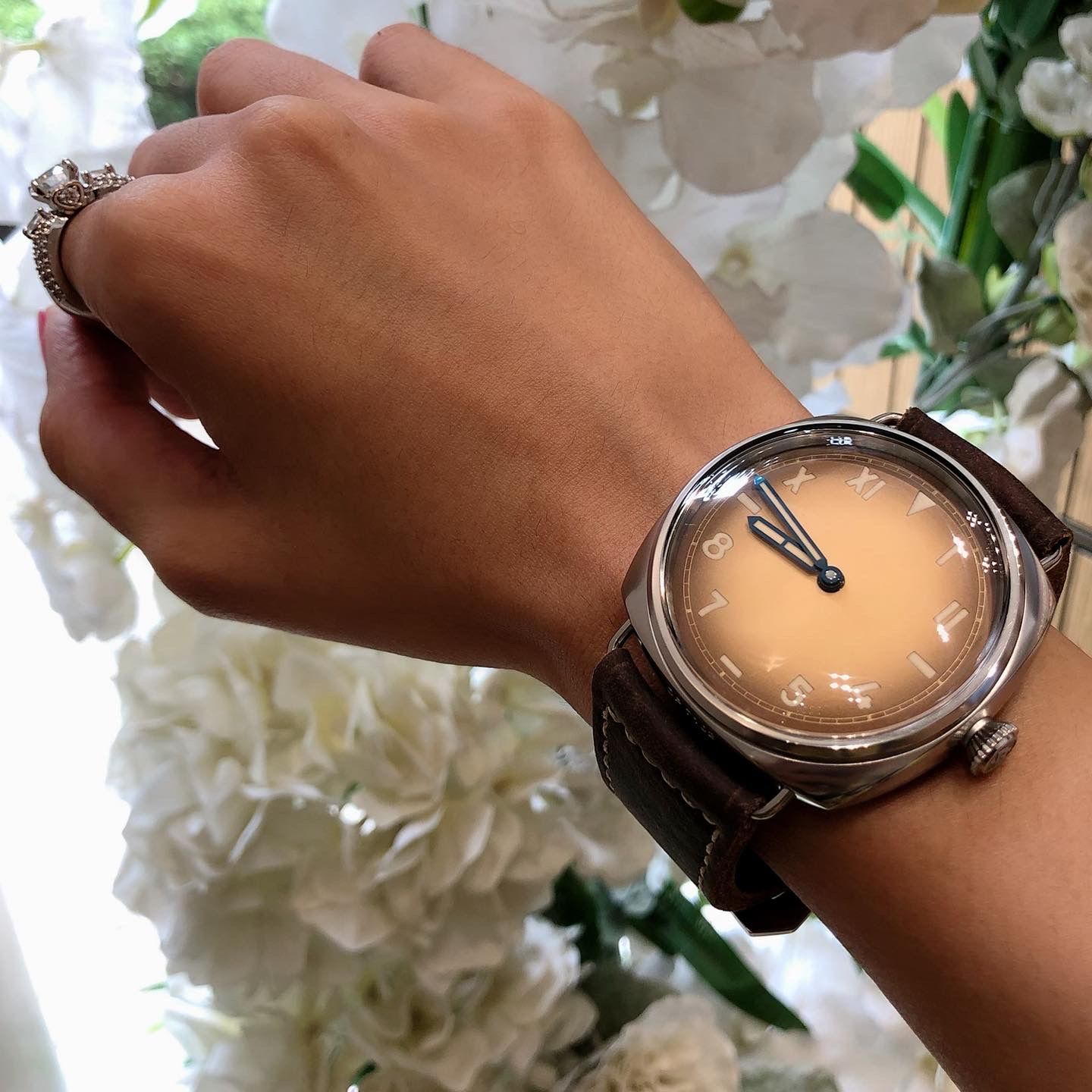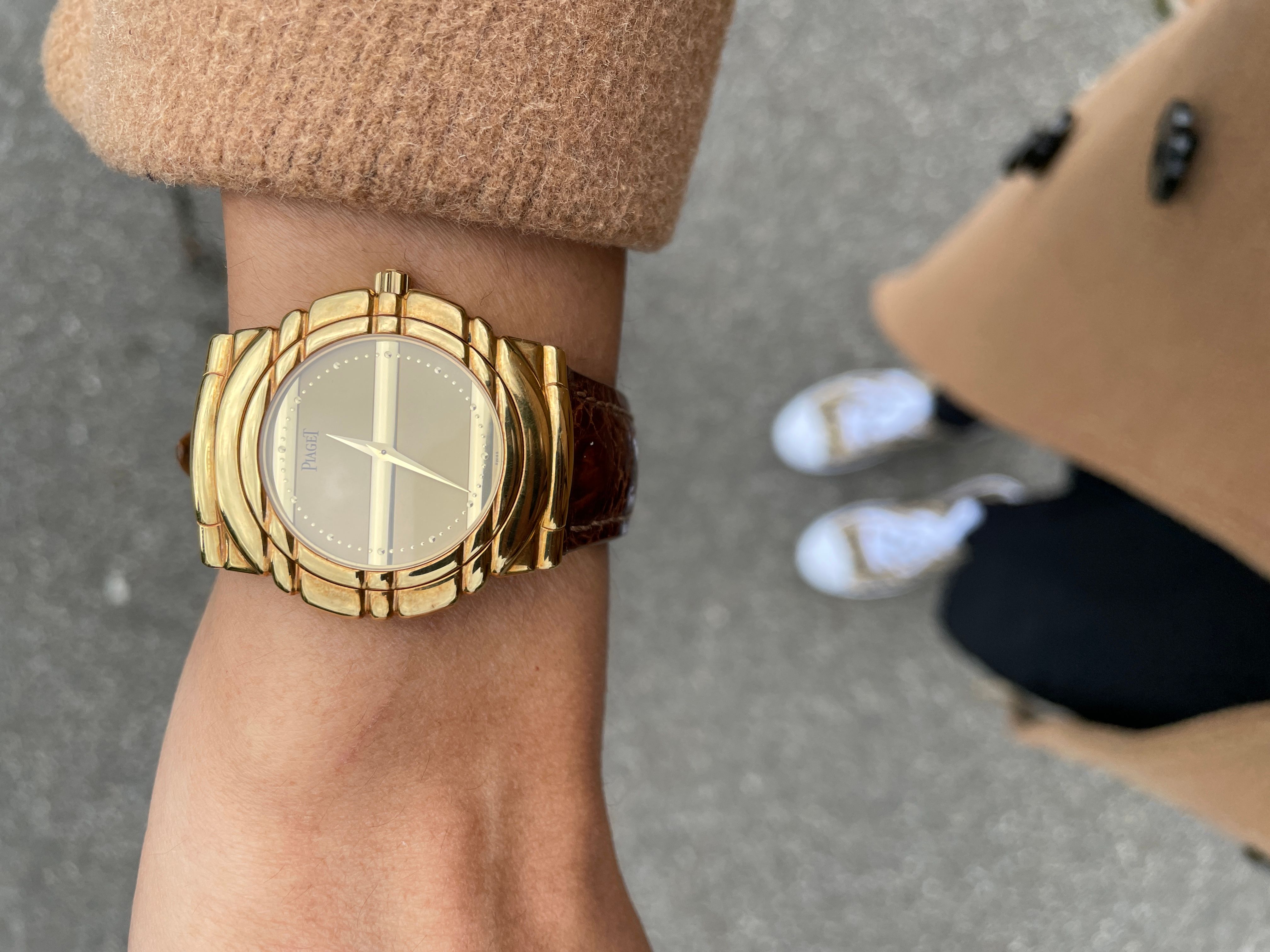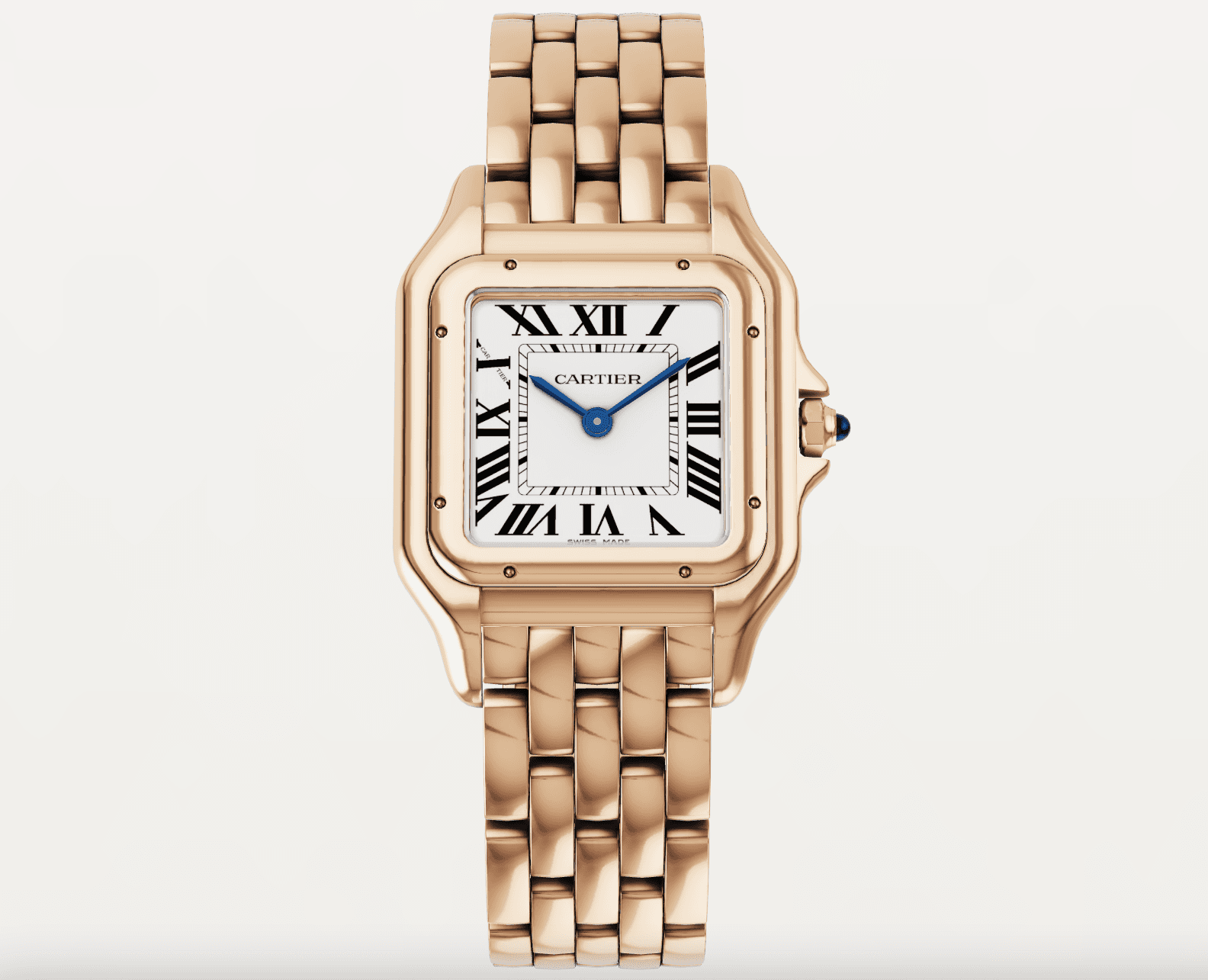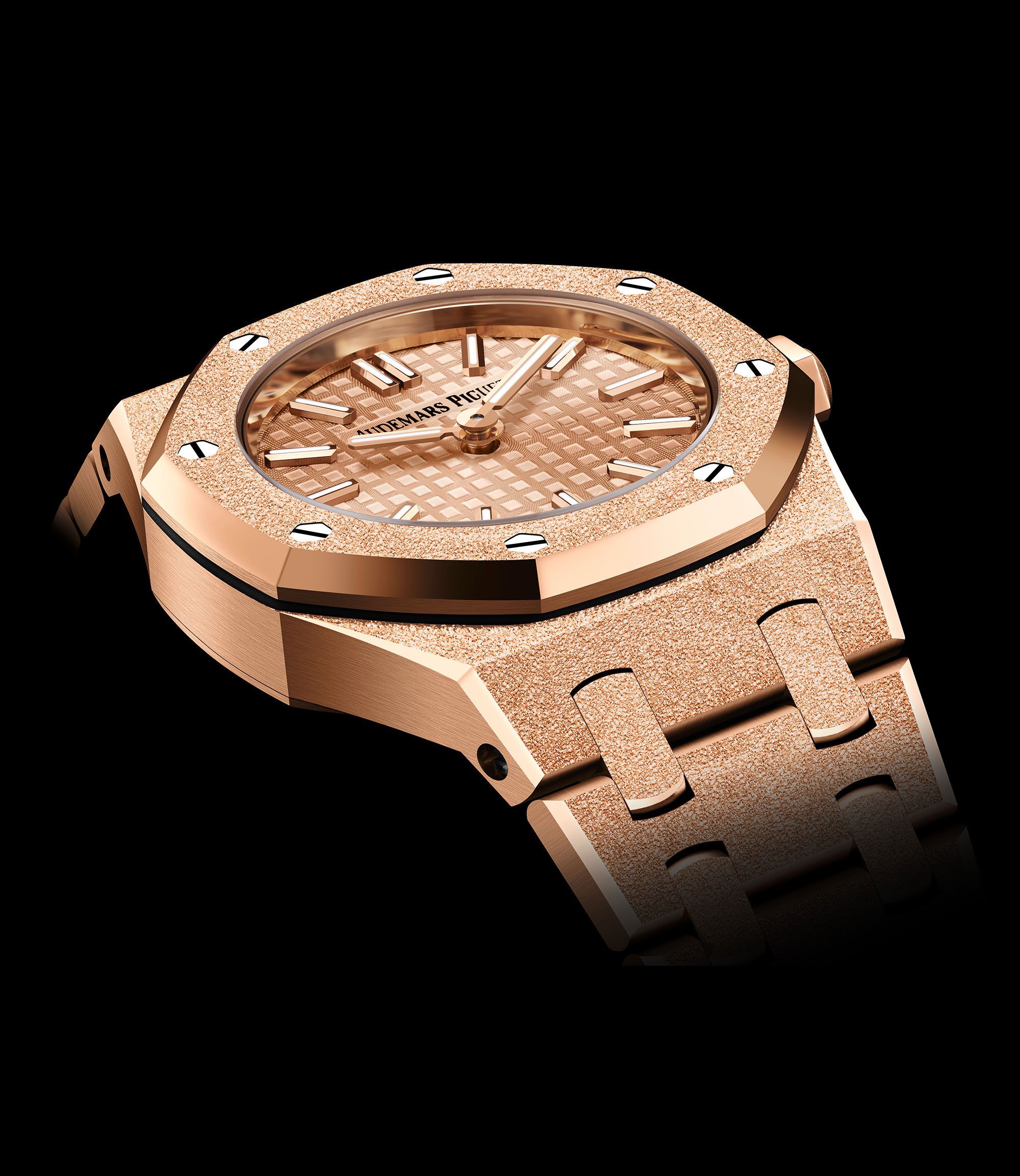Size Controversy: Are You Wearing The Wrong Watch?
When wristwatches transitioned from pockets to wrists in the early 20th century, their primary role was functional. Throughout this evolution, up until the 1970s, watches were typically modest in size with cases 30-35 mm. Then came the quartz revolution in the 80’s and 90’s and the focus shifted towards making watches with bold design statements rather than just practical timekeepers, much like the 42mm Royal Oak Offshore in 1992, and Panerai’s 47mm military-inspired dive watches in the late 90s. Since then until maybe 2023, watches under 40mm began to be humorously labelled with unflattering names.
Historically, in the 16th and 17th centuries, watches were rarely designed with one specific gender in mind, in fact they were categorised primarily by their rarity and high value. It is said that owning watches was above all an expression of belonging to a particular socio-cultural category. And although they were rarely worn, and when they were, both men and women usually wore them around their necks!

The dynamics changed from the 18th century onwards when “women's watches” were being adorned with precious stones and miniature enamel paintings of pastoral scenes, flowers or foliage. At the same time, in the Western world, men gave up colours and jewels to adopt dark suits from the 19th century onwards. Their watches grew more restrained and at the same time more accurate, while the most prestigious were equipped with horological complications. In the 20th century, the wristwatch became the norm for both men and women, yet the gender distinction remained. However, in the 1960s and 1970s, the cultural revolution began to blur the lines.
My Personal Journey
Over the past two decades, my journey of watch collecting, tastes, and preferences has evolved significantly. In my early years, I gravitated towards prominent contemporary names like Rado. As time went on, my interest shifted towards independent watchmaking brands such as Hautlence. Today, my preferences are leaning towards the vintage and neo-vintage categories. I'm not a collector, but I do love watches and have witnessed my tastes evolve over time.

Big Watches Get You Noticed?
In my 20s, I was certainly influenced by trends. The allure of fashionable, oversized watches was strong, and I found myself following the crowd. However, with time and my involvement in the industry, I was introduced to the most underrated aspects of choosing a watch even today - comfort and wearability. Reflecting on my past choices, I wonder if I wore large watches to be noticed or to make a statement, or if I genuinely loved them. Was it my subconscious way of making a statement in an industry filled with suits to convey strength and confidence? Honestly I can’t even remember anymore. I do however remember that they weren't always the most comfortable, but as the saying goes, fashion often trumps comfort.
I'm not against large dials at all. I still adore my 42mm Luminor, my EL Primero and Dad’s two-tone Daytona. However, at this point in my life, my priorities have shifted towards comfort, history, and heritage over following so-called trends. Now, I choose watches that not only fit my wrist well but also resonate with my personal sense of style and appreciation for the craft. I now seek pieces that tell a story, showcase intricate engineering, and resonate with my evolving aesthetic sensibilities. This journey has transformed me into a discerning watch connoisseur, appreciating the subtle nuances and historical significance behind each timepiece I add to my collection.
Which brought me to think about how I would rework my collection, given a choice and a substantial bank balance of course. Here goes, as of 2024 :
Panthère De Cartier WATCH
The Panthère watch collection dates way back to 80’s and honestly with a few iterations here and there this collections has stuck to its DNA - square case with gently rounded corners and an integrated bracelet, the Panthère watch exudes a refined elegance that mirrors the grace and fluidity of the panther. It comes in different sizes, but I’ve got my eyes on this medium sized rose gold version.

Audemars Piguet
The Royal Oak Mini - 23 mm in Rose gold
1977 witnessed the appearance of the first 20mm mini Royal Oak, which I can categorically state is one of the most sought-after vintage Royal Oak women’s watches today. Giving into the demands of today and also due the scarcity of the vintage models even in pre-loved markers, Audemars Piguet introduced three new frosted gold mini Royal Oaks in 23mm - yellow, white or pink gold. Clearly, I'm all for the rose gold version here.

Jaeger-LeCoultre
The story of Reverso and India is no secret. That being said, I am totally captivated by this Reverso Tribute Burgundy Edition for its perfect blend of heritage and contemporary elegance. The rich burgundy dial, paired with the sleek, rectangular case, exudes a sophisticated charm that is both timeless and modern. This edition's deep red hue is striking yet understated, making it a versatile piece that stands out without being overly ostentatious. For me, it embodies the essence of refined watchmaking and personal expression.

Vacheron Constantin
Historiques American 1921 – white gold 36.5 mm
Ideal for the vintage enthusiast with a penchant for refinement, this timepiece boasts a chic retro allure accentuated by its sleek 36.5mm dimensions and finely grained silver-toned dial. The minimalist dial showcases Arabic numerals and a snailed small seconds counter, complemented by slender black 18K gold open-tipped hours and minutes hands. Embracing its retro charm reminiscent of the original design, the dial is accentuated by a minutes track along its circumference. Driving the hours, minutes, and small seconds functions is the manual-winding Vacheron Constantin Calibre 4400 AS. Positioned off its traditional axis and accompanied by a crown at 1:30, this in-house movement boasts a comfortable 65-hour power reserve. Its intricate hand-crafted decorations, visible through the transparent caseback, reflect the meticulous artistry of Haute Horlogerie timepieces like the new American 1921. Completing its allure are two patinated calf leather straps in dark brown or burgundy, crafted yet again by Serapian.

Well, that’s as of today! As evolve, so too does the criteria for selecting a timepiece—from considering functionality and style to valuing heritage, innovation, and even sustainability. Each watch becomes not just an accessory, but a reflection of one's personality and values, embodying a unique blend of tradition and modernity. This evolution in taste enriches the experience of collecting watches, turning it into a journey of discovery and self-expression that continues to unfold with every new acquisition
No articles found









